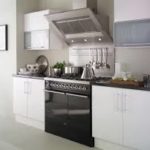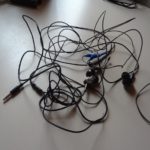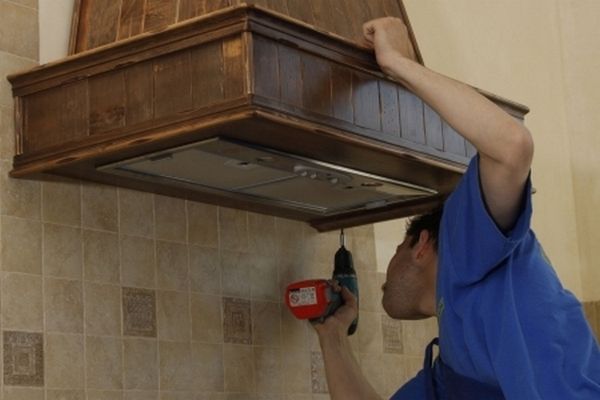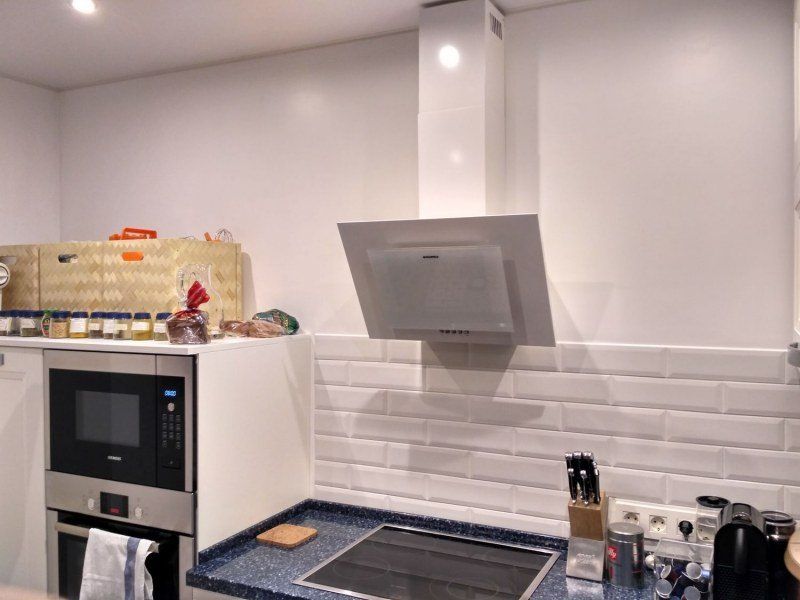Types of kitchen hoods without an air duct
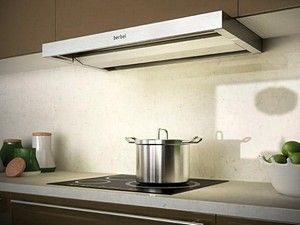 When purchasing such an important household appliance as a range hood, buyers are often faced with the problem of installing an air duct. But manufacturers produce different models of devices that make it possible to do without installing a ventilation duct.
When purchasing such an important household appliance as a range hood, buyers are often faced with the problem of installing an air duct. But manufacturers produce different models of devices that make it possible to do without installing a ventilation duct.
Our article is devoted to this type of kitchen hoods – hoods without an air duct.
The content of the article
Originality and principle of operation
Everyone knows the principle of operation of exhaust devices. They draw in polluted air above the hob and remove it outside the kitchen into the ventilation shaft. These models belong to supply structures.
Let's figure out what happens in a unit that does not require ventilation.
The main principle of its operation is recirculation, that is, the return of air masses back to the kitchen. Therefore, these types of household appliances are called recycling.
Similarities between recirculation and supply devices

Like supply hoods, ductless appliances draw in air that is directly above the stove.
Thus, both types perform the same function and cleanse the atmosphere of the kitchen.
Differences between the two types
Recirculation units do not have a ventilation outlet. Therefore, they do not remove the air that has entered the device, but return it back to the room.But they do this only after filtration, purification and removal of particles that pollute the composition of the air mass.
In this regard, such designs necessarily have a fan that accompanies the movement of air, as well as one or more filters responsible for its high-quality cleaning.
Types of hoods without duct
Having determined the main distinguishing feature of this type of device, we will continue to study them.
Manufacturers have developed and produce different models of such hoods. This allows customers to choose the appliance that is most suitable for their specific kitchen and use.
Reference. Carbon filters clean the air from main types of contaminants (dust, soot, fumes, odors), grease filters remove minimal particles of fat.
Housing options
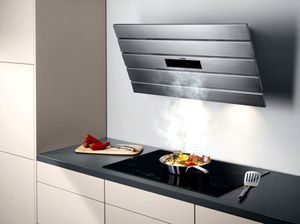
- Compact flat models of horizontal or vertical arrangement, functional and at the same time attractive in their design.
- Built-in appliances, which are popular due to the ability to be placed in a kitchen cabinet above the hob.
Help: the group of built-in devices also includes telescopic models with a retractable panel.
The housings of flat and built-in units are made of high-strength plastic or metal (aluminum, stainless steel, enamel).
Fastening
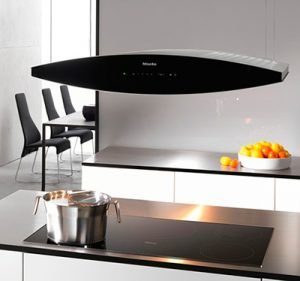
- Flat types can be mounted to a wall or ceiling. This version of hoods is called island hoods. It is usually used in large kitchens, in which the work surface together with the hob is not located along the perimeter of the wall, but in the center of the room, in the form of an island.
- Built-in models are attached to the furniture - the cabinet in which they are located.
Additional features
For ease of use, manufacturers equip devices with additional features.
- The presence of lighting, which is enough to avoid using the main light while preparing dishes.
- Automatic switching on of the device, which occurs immediately after the hob has been used. There is also no need to turn off the unit. It will stop working on its own as soon as the surface is disconnected from gas or electricity.
- A control panel that allows you to control the operation of the device from a distance.
- A filter indicator that tells the hood owner that the filter requires replacement.
Advantages and disadvantages of ductless hoods
To understand what type of exhaust hood you need, you need to objectively evaluate ductless home appliances.
Advantages of recirculating hoods
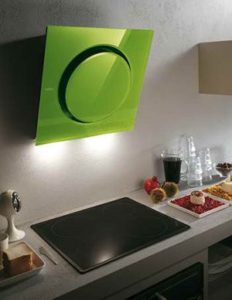
- The compactness of the devices allows them not to look bulky in a kitchen of any size.
- The absence of a corrugated or plastic channel for air exhaust, which does not always fit into the kitchen design. And besides, it often requires changes in the interior and requires additional installation.
- Energy efficiency, reduced electricity costs.
- Simplicity and ease of installation, connection, maintenance.
Disadvantages of devices
- The filters included in the design have to be changed regularly.
- The power of recirculation hoods is less than that of supply hoods.
- Some models of hoods without an air duct are louder than a device associated with supply ventilation.
Now you know what types of ductless hoods there are. Consequently, you will be able to independently determine how much you need this type of household appliance and whether it is worth purchasing.And also choose a suitable design that will make the kitchen even more comfortable.

